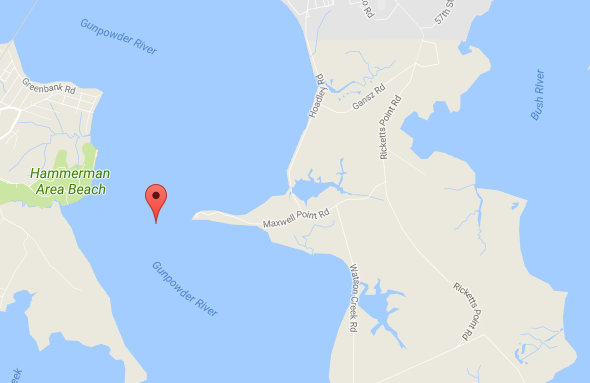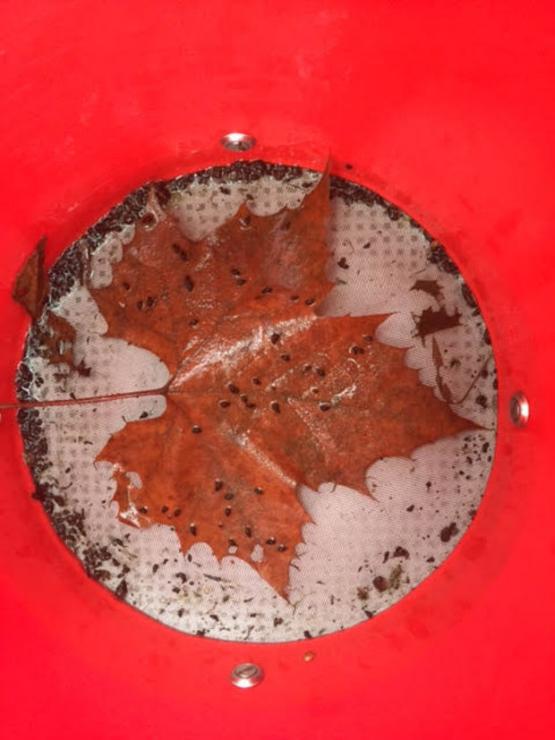The Maryland Department of Natural Resources has confirmed the first known presence of an
invasive non-native, freshwater mollusk in Maryland waters.

After being notified in early September of small snails in the Gunpowder River, department biologists and species expert Edward Levri confirmed the presence of New Zealand mudsnails (Potamopyrgus antipodarum).
Gunpowder Riverkeeper Theaux Le Gardeur first reported the snail in northern Baltimore County, south of the Prettyboy Reservoir in the Gunpowder Falls mainstem near Bush Cabin Run. Biologists investigating the site collected several hundred snails in a matter of minutes.
The New Zealand mudsnail is small, reaching only 4-6 millimeters and is identified by its unique color variations of gray, dark brown or light brown. It feeds on organic matter, preferring algae, bark and leaves for sustenance.
Labelled as an invasive and nonindigenous in many parts of the world, the mollusk is highly resilient and proliferates easily. The snail reproduces asexually, with females producing well over 100 clones in a single year. It can survive and thrive in a variety of habitats including brackish water and freshwater lakes, ponds, rivers and streams. The mudsnail has spread to other states in North America after first being discovered in Idaho in 1987.

While the mudsnails’ potential ecological impact remains uncertain, state biologists are concerned that over time the species could displace native snails and aquatic insects that other native species, like fish, depend on.
Given its small size, robust reproductive strength and ability to withstand drying, the snail can be easily spread to other Maryland waters via wading boots, fishing gear or other recreational equipment. As such, the department asks all anglers, boaters and anyone else in contact with the Gunpowder River to check their equipment and decontaminate their boats (including motor and trailer), boots, buckets, fishing rods, oars and tackle to prevent the spread of the mudsnail into other Maryland waters.
Specifically, the department recommends the following precautions: remove all dirt, mud and sand, and all visible animals, fish and plants from any equipment and gear before traveling and/or using them in another body of water. Eliminate water from all equipment and gear at the site before transport. Draining water at home could introduce an invasive hitchhiker to a local stream through the storm drain.
 After being notified in early September of small snails in the Gunpowder River, department biologists and species expert Edward Levri confirmed the presence of New Zealand mudsnails (Potamopyrgus antipodarum).
Gunpowder Riverkeeper Theaux Le Gardeur first reported the snail in northern Baltimore County, south of the Prettyboy Reservoir in the Gunpowder Falls mainstem near Bush Cabin Run. Biologists investigating the site collected several hundred snails in a matter of minutes.
The New Zealand mudsnail is small, reaching only 4-6 millimeters and is identified by its unique color variations of gray, dark brown or light brown. It feeds on organic matter, preferring algae, bark and leaves for sustenance.
Labelled as an invasive and nonindigenous in many parts of the world, the mollusk is highly resilient and proliferates easily. The snail reproduces asexually, with females producing well over 100 clones in a single year. It can survive and thrive in a variety of habitats including brackish water and freshwater lakes, ponds, rivers and streams. The mudsnail has spread to other states in North America after first being discovered in Idaho in 1987.
After being notified in early September of small snails in the Gunpowder River, department biologists and species expert Edward Levri confirmed the presence of New Zealand mudsnails (Potamopyrgus antipodarum).
Gunpowder Riverkeeper Theaux Le Gardeur first reported the snail in northern Baltimore County, south of the Prettyboy Reservoir in the Gunpowder Falls mainstem near Bush Cabin Run. Biologists investigating the site collected several hundred snails in a matter of minutes.
The New Zealand mudsnail is small, reaching only 4-6 millimeters and is identified by its unique color variations of gray, dark brown or light brown. It feeds on organic matter, preferring algae, bark and leaves for sustenance.
Labelled as an invasive and nonindigenous in many parts of the world, the mollusk is highly resilient and proliferates easily. The snail reproduces asexually, with females producing well over 100 clones in a single year. It can survive and thrive in a variety of habitats including brackish water and freshwater lakes, ponds, rivers and streams. The mudsnail has spread to other states in North America after first being discovered in Idaho in 1987.
 While the mudsnails’ potential ecological impact remains uncertain, state biologists are concerned that over time the species could displace native snails and aquatic insects that other native species, like fish, depend on.
Given its small size, robust reproductive strength and ability to withstand drying, the snail can be easily spread to other Maryland waters via wading boots, fishing gear or other recreational equipment. As such, the department asks all anglers, boaters and anyone else in contact with the Gunpowder River to check their equipment and decontaminate their boats (including motor and trailer), boots, buckets, fishing rods, oars and tackle to prevent the spread of the mudsnail into other Maryland waters.
Specifically, the department recommends the following precautions: remove all dirt, mud and sand, and all visible animals, fish and plants from any equipment and gear before traveling and/or using them in another body of water. Eliminate water from all equipment and gear at the site before transport. Draining water at home could introduce an invasive hitchhiker to a local stream through the storm drain.
While the mudsnails’ potential ecological impact remains uncertain, state biologists are concerned that over time the species could displace native snails and aquatic insects that other native species, like fish, depend on.
Given its small size, robust reproductive strength and ability to withstand drying, the snail can be easily spread to other Maryland waters via wading boots, fishing gear or other recreational equipment. As such, the department asks all anglers, boaters and anyone else in contact with the Gunpowder River to check their equipment and decontaminate their boats (including motor and trailer), boots, buckets, fishing rods, oars and tackle to prevent the spread of the mudsnail into other Maryland waters.
Specifically, the department recommends the following precautions: remove all dirt, mud and sand, and all visible animals, fish and plants from any equipment and gear before traveling and/or using them in another body of water. Eliminate water from all equipment and gear at the site before transport. Draining water at home could introduce an invasive hitchhiker to a local stream through the storm drain.